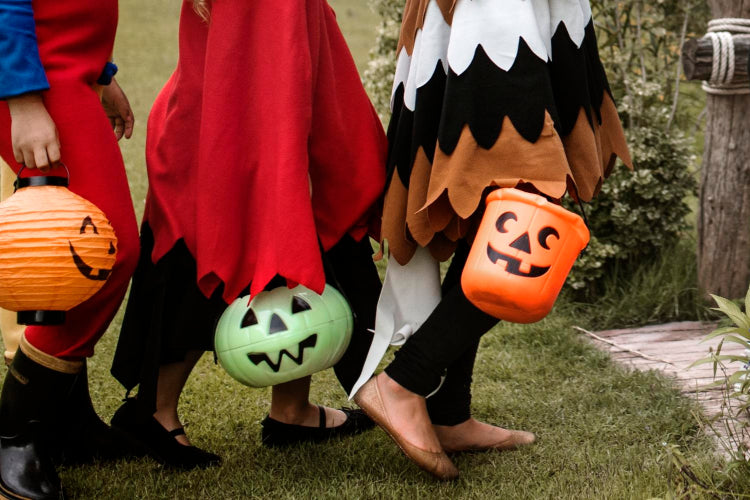
Sure, Halloween is meant to be a bit scary. However, there’s a difference between the make-up and mask-created frights and the real fear the holiday can trigger in food allergic families. While the Teal Pumpkin Project can assuage some of those fears, it’s not a fix-all. Here’s a few more steps to making allergic-Halloween more “treat” than “trick.”
Dry Run
The bite-sized candy that ends up in your bucket may not have all the nutritional info (including allergy labeling) on the wrapper of each individual piece. That info will appear on the bulk package your neighbor purchased. This can present a problem for allergic trick-or-treaters. The good news is that a “pre-Halloween” ritual can rectify the issue. Take a family trip to your favorite store and spend some time in the aisles of Halloween candy. Take a good look at those big bags of yummy treats and read the labels carefully. Make a list of candy that checks the right allergy boxes, as well as a list of candy that doesn’t. Make sure your kids know the difference, too. If they’re presented with the option to choose from a bowl full of treats on Halloween, they’ll have an idea of which sweet options to look for and which to nix.
Check Everything
Just because your favorite treat is safe in its full-sized version, doesn’t mean its “fun-sized” counterpart is also safe. Not only may there be a cross-contamination risk associated with different variants of your go-to chocolate, there can also be changes to the overall recipe. Take the time to look over the bucket-ready counterparts of your favorite candies, too.
Be Prepared
Your child’s auto-injector should be with her all times. She may just be walking around the block to trick-or-treat, but that doesn’t mean she can leave the allergy meds at home. Make sure she’s got them with her and that someone she’s with knows when and how to administer them.
Switch It Out
Not being able to eat most of what’s in your plastic pumpkin can really put a damper on your Halloween fun. Here’s an idea: While you’re in the store reviewing all those bags of candy, have your child identify some of his favorite safe treats and a couple of non-food items he’s got his eye on. Purchase some of those items – edible or otherwise – and put them aside for a post-Halloween switch-out. Some families make the replacement item a surprise. The child leaves all their non-safe items out over night and in the morning they find something else in its place. Other households opt to just trade the items as the family sorts out the bucket together on Halloween. Pick the version that works best for you.
Donate It
You’ve now got a pile of candy your child can’t eat. What do you do with it? Don’t throw it out. Donate it. Consider an organization like Operation Gratitude, Soldiers Angels and Halloween Candy Buy Back that sends your excess candy to US troops. Enter your zip code at those websites to search for a list of local businesses serving as drop-off points. You can also donate your extra candy to your local food pantry, shelters, and other non-profits.
